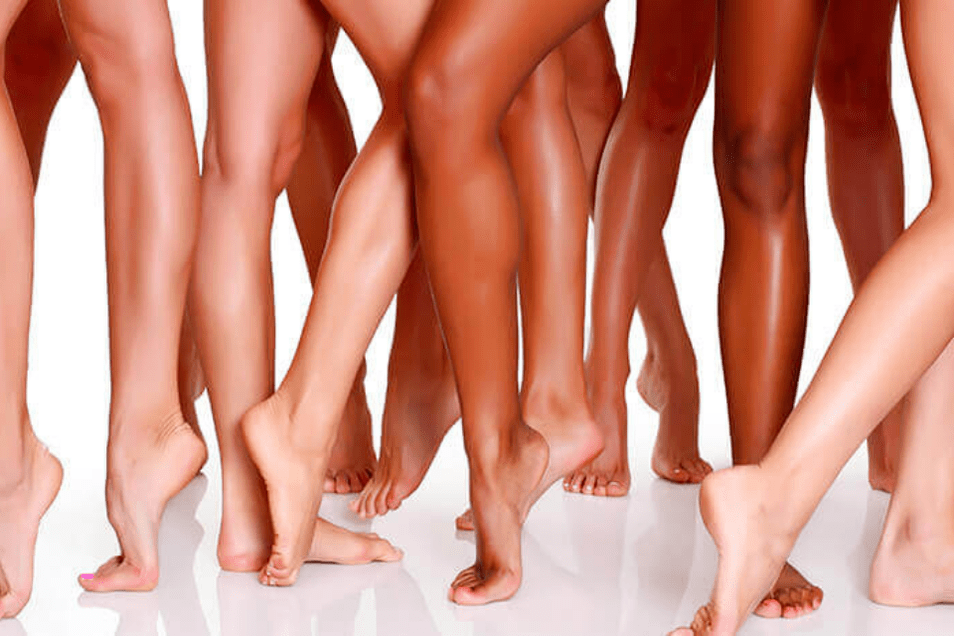
Varicose veins are a common disease characterized by an increase in the lumen of the blood vessels, a malfunction of the valve apparatus and the appearance of reverse blood flow. The pathological process can be localized in different places, therefore, there are several types of diseases:
- expansion of the veins of the esophagus;
- rectal veins (hemorrhoids);
- small pelvic veins;
- spermatic cord veins (varicocele);
- veins of the lower extremities.
Varicose veins in the legs are considered the most common. According to some estimates, more than 30% of the population suffers from it, the majority being women. Varicose veins on the legs are not only unpleasant protruding veins, but also a lot of unpleasant sensations and inconveniences. The pathological process is accompanied by severity, pain, edema, and often leads to dangerous complications: thrombophlebitis, thrombosis, trophic ulcers. Many would like to know how to get rid of varicose veins forever, as it significantly impairs quality of life. But, unfortunately, this phenomenon is irreversible and the only thing that can be achieved is to stop or slow down the development of the disease.
Causes
The causes of varicose veins are not yet clearly understood. The disease is understood to be associated with thinning, weakness, and loss of elasticity of the vascular wall, as well as valve incompetence. As a result, the veins are unevenly dilated, stretched, elongated, tangled, nodular. It is believed that a genetic predisposition plays a decisive role in the onset of the disease, that is, from birth, weak vessels and defective valves.
There are a number of factors that contribute to the development of varicose veins, although they are not their causes:
- Heredity (according to experts, the risk of the disease in people whose parents have it is up to 70%).
- Belonging to the female sex. This is due to hormonal changes during puberty, during pregnancy and during menopause, in addition to taking hormonal contraceptives and wearing high heels.
- Work activity associated with a prolonged stay on the legs or in a sitting position (hairdressers, salespeople, surgeons, waiters, drivers, accountants, programmers and others).
- Old age, in which the weakening of the walls of the blood vessels and the wear of the valve apparatus is a natural phenomenon.
- Operational interventions.
- Sedentary lifestyle.
- Increased intra-abdominal pressure due to being overweight, pregnancy, lifting heavy objects (loaders, weightlifters), frequent exertion with chronic constipation, and coughing.
Treatment methods
Varicose veins are a chronic process that begins gradually and only progresses over time. To date, it is impossible to completely defeat the disease, but it is possible to slow down development and reduce symptoms if complex treatment is applied, including:
- change of lifestyle;
- diet;
- physical therapy exercises;
- compression therapy;
- medications (for internal use and local administration);
- Surgical intervention;
- thermal procedures;
- folk methods.
You will have to fight your whole life against varicose veins. Self-medication should not be performed. It is necessary to be examined by a phlebologist or vascular surgeon, who will diagnose, determine the stage of the disease and the severity of the injury, and prescribe the appropriate treatment. The main task is to eliminate or reduce clinical manifestations, stop progression, prevent relapses and the development of complications.
The effectiveness of the treatment will depend on the patient's compliance with all the doctor's recommendations. It is important to seek help at an early stage, when there is still no pain, but evening swelling, heaviness and fatigue of the legs, small spider veins on the skin have appeared.
Lifestyle correction
Without changing your lifestyle, it is impossible to effectively treat varicose veins. The rules to follow are completely banal, and non-compliance with them is often associated with a lack of willpower or an irresponsible attitude towards health.
- Maintain a normal body weight.
- Separate yourself from bad habits: alcohol and smoking.
- Refusing to sunbathe, visiting steam rooms and saunas, taking hot baths (including foot baths).
- High heels rejection (no more than 4-5 cm).
- The use of special elastic jersey.
- Provide physical activity. This can be walking, swimming, physical therapy exercises, some sports. The main thing is to exclude squats, lifting weights, running long distances, jumping, martial arts.
- Proper nutritionThe diet should contain more fresh vegetables, fruits, herbs, whole grains, seafood. It is recommended to reduce the amount of meat. It is necessary to give up smoked, fried, salty, fatty. Of the drinks, give preference to green tea, clean water, fruit drinks, fresh natural juices and limit coffee.
- Take every opportunity during the day to raise your legs to an angle of about 20 degrees.
- Buy a special pillow for the legs so that they are above the level of the heart during sleep.
- Try to rinse your feet with cold water as often as possible.
Compression therapy
The special stretch sweater is available today in a great variety. These are knee-high stockings, stockings, stockings of different colors and densities, which practically do not differ from ordinary ones. They have become a good alternative to elastic bandages, uncomfortable to wear and apparently unsightly.
The special T-shirt cannot treat varicose veins, but it improves microcirculation, reduces stress on veins, prevents blood pooling, reduces the diameter of blood vessels, and improves venous and lymphatic blood outflow. A person feels lightness in the legs, at night he is less tired, there is no swelling.
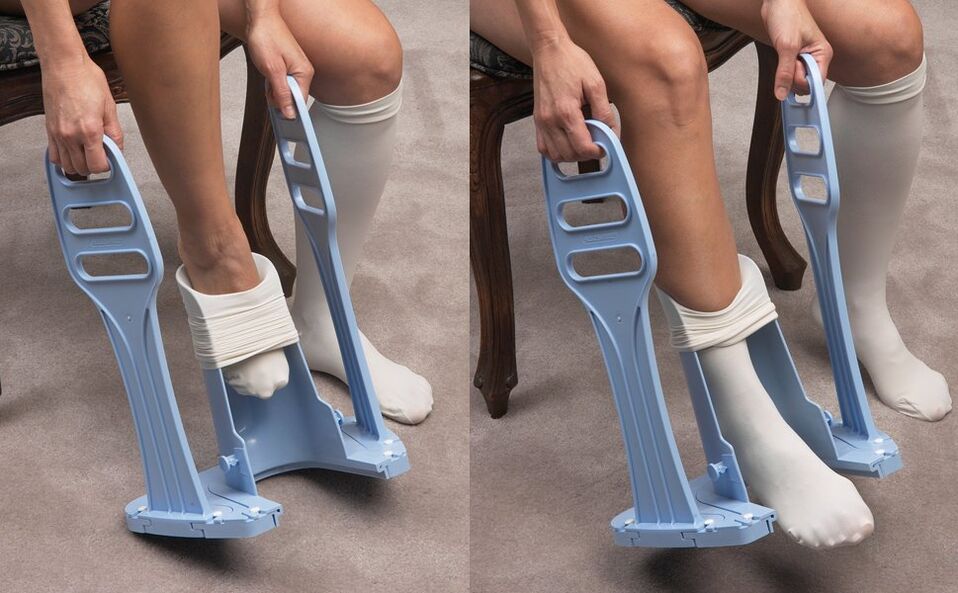
In the beginning, without the habit of putting compression stockings on hand, it will be difficult. To make things easier for you, you can buy a special device.
There are four kinds of medical knitwear, according to the pressure applied. You can only use products of the first compression class, which are considered prophylactic and intended rather for healthy people. The rest must be prescribed by a doctor, depending on the diagnosis and severity of the varicose veins. You should be aware that compression products may be contraindicated for certain diseases. Pantyhose or stockings are selected by the doctor strictly according to the size, otherwise the desired effect will not be.
Drug treatment
For the treatment of varicose veins, tablets and external agents in the form of gels, creams and ointments of diverse spectrum of action are used. They increase vascular tone, improve microcirculation, promote blood flow and prevent skin changes. The medications are designed to relieve fatigue, heaviness, discomfort, swelling, itching, cramps, and pain in the legs. They are assigned strictly on an individual basis.
The main means of treating varicose veins are venotonics. They are made from horse chestnut, rutin, grape leaves and are almost always well tolerated by patients. Available in the form of tablets, capsules, gels.
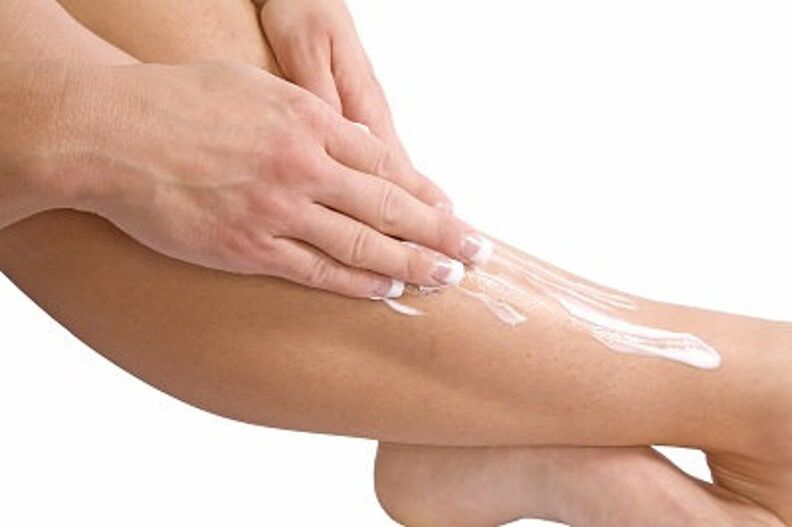
It is necessary to apply a gel or cream on the legs with varicose veins daily and rub with light movements.
Anticoagulants are used to reduce the viscosity of the blood and reduce the likelihood of thrombophlebitis. These are heparin-based ointments with cooling additives in the form of menthol, camphor, eucalyptus. In addition to thinning the blood, they prevent the development of thrombophlebitis.
For itchy skin changes, antihistamines may be prescribed. For inflammation, nonsteroidal anti-inflammatory pills are prescribed.
Surgical intervention
To get rid of varicose veins, operations are performed to remove the affected part of the vessel in order to stop the discharge of blood from the superficial to the deep vein. The operation is called a phlebectomy. In its classic form, it is used less and less today in connection with the emergence of new, less traumatic ways of treating varicose veins. Such treatment, as a rule, is indicated for large diameter veins and advanced cases of the disease.
A gentler method is microflebectomy, in which a section of a vein is removed in parts and not through an incision, but through a puncture.
Thermal methods
Radiofrequency ablation is considered the safest and least traumatic method of treating varicose veins, although it has some contraindications. The method consists of the thermal effect of microwaves, as a result of which the venous lumen is closed. Main advantages:
- Outpatient treatment;
- without the need for anesthesia and incision;
- recovery does not take long;
- the procedure is easily tolerated;
- it can be done in summer;
- no bruising after treatment, swelling and pain are negligible.
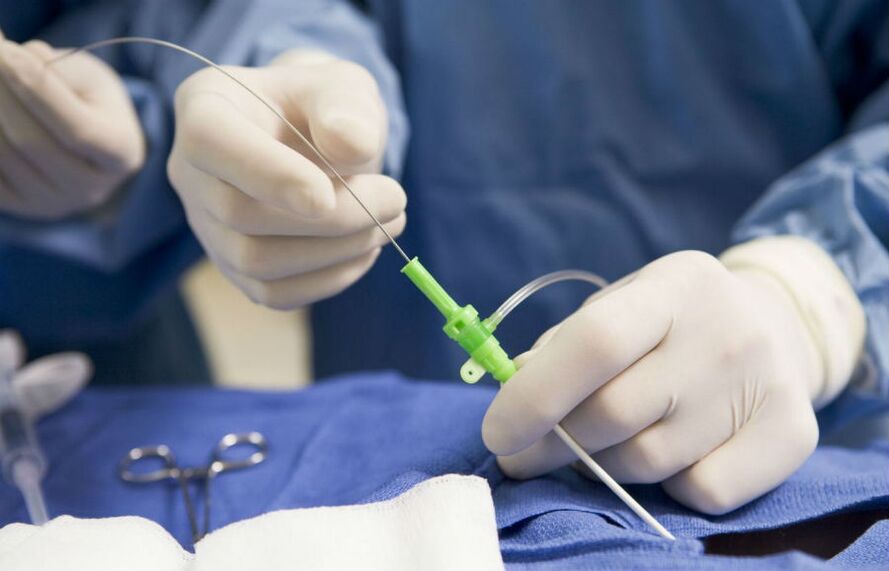
Radiofrequency ablation is a low-traumatic approach to treating varicose veins.
Laser coagulation is another method of treating varicose veins. During the procedure, a laser is applied to the wall of the vessel. Radiation leads to adhesion of the vein walls and complete closure of the lumen. It is performed on an outpatient basis under local anesthesia without incisions. A catheter is inserted into the lumen of the vein, through which an LED is inserted and radiation is delivered. The procedure is not very traumatic, complications are very rare.
Sclerotherapy
This non-surgical method is one of the most common. It is used in small veins and as part of a complex treatment in conjunction with surgery. The bottom line is that a special drug with a sclerosing effect is injected into a vein with a fine needle. As a result, the vessel walls stick together, close, and stop blood flow. The affected vein becomes a fibrous cord. The main advantages of the method:
- Outpatient treatment;
- low invasiveness;
- ease of execution;
- the duration of the procedure is about 20 minutes;
- good cosmetic effect.
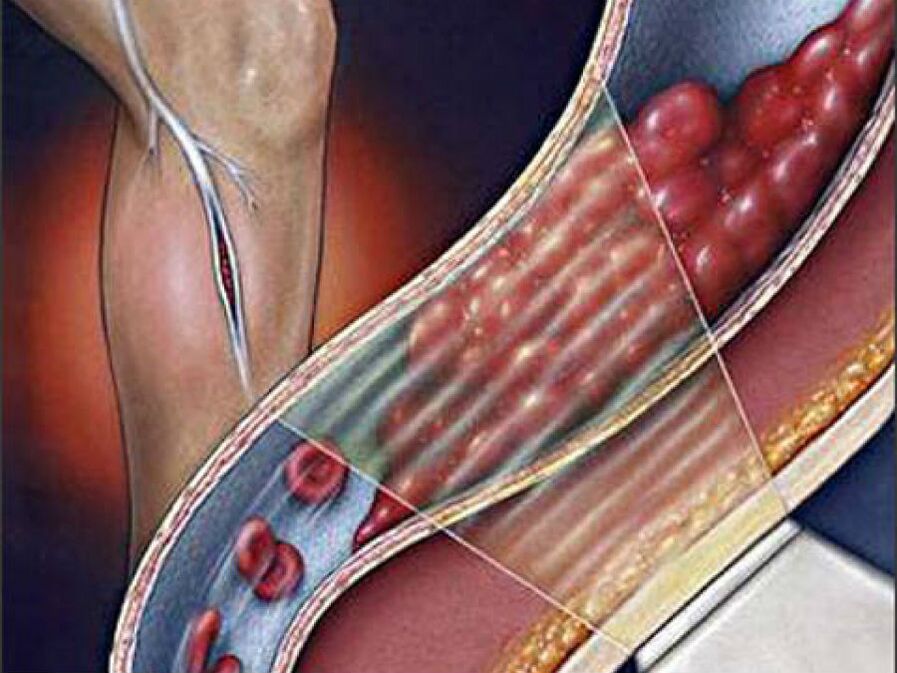
If the disease starts, a complication such as deep vein thrombosis can develop.
Traditional methods
Walnut tincture
Pour chopped green walnuts into a glass dish and pour in olive oil. Put in the sun for 40 days. Apply as needed, lubricating the affected area. Continue the treatment for about four months.
Cabbage leaf
Beat a cabbage leaf, apply a layer of olive oil on one side, apply this side to the diseased area, bandage and leave for a day. Continue the treatment for a month.
Horse chestnut
This is one of the most effective home remedies. For the treatment of varicose veins, a tincture is prepared from the fruits of the plant, which must be crushed, half filled in a glass container (three liters) and filled with vodka. Remove in a dark place for a month, stir from time to time. When you're ready, rub over sore spots overnight. Chestnut alcohol tincture for external and internal use with varicose veins can be purchased at the pharmacy.
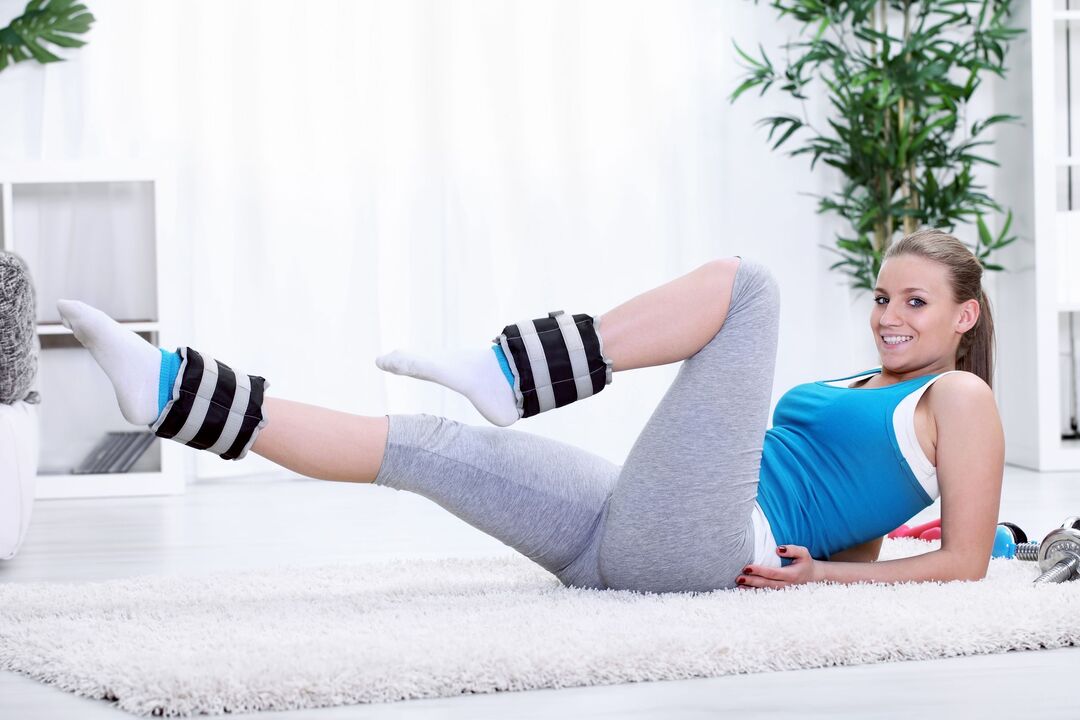
Physical therapy is an integral part of complex treatment for varicose veins.
Training
When varicose veins appear, the question may arise as to whether it is possible to participate in physical education and sports and what exercises are useful. Most doctors agree that physical activity in such a disease is very important, as dynamics are beneficial to the veins and static is detrimental. But it's just as important to check with your doctor about what kinds of sports you can do and what kinds of loads will be optimal. Also, the patient can be shown special therapeutic exercises, which are carried out directly in a medical institution. At home, you can also do simple but effective exercises that, with regular exercise, will help reduce the symptoms of varicose veins.
- Lie on your back, put pillows under your feet so that they rise at an angle of 20 degrees. Close your eyes, relax completely, breathe deeply.
- In the supine position, lift your legs vertically and alternately turn your feet in and out.
- Lie on your back and move your legs like riding a bike.
- Lying on your back, raise your legs and cross them (scissors).
- Stand up straight, lower your arms, legs together. Get up slowly on your toes and then lower yourself just as slowly.
- Walk in place, don't rip your socks off the floor.
- Sit on a chair, bend your legs at the ankles toward yourself and away from you, then bend your toes in the same way.
- Pour over the legs with an elastic stream of water (alternately cold and warm).
conclusion
Varicose veins is an irreversible process, but it must be treated without fail, especially since there are quite a few modern methods that must be used in combination. Without treatment, there is a high risk of developing complications such as chronic venous insufficiency, phlebitis, thrombophlebitis, thrombosis, trophic ulcers, and even a condition so dangerous that it can result in death, such as pulmonary embolism.























